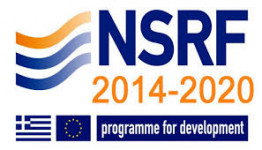(MIS 5002735) implemented under Action for Strengthening Research and Innovation Infrastructures, funded by the Operational Programme Competitiveness, Entrepreneurship and Innovation (NSRF 2014-2020) and co-financed by Greece and the European Union (European Regional Development Fund)
Funding

the European Union’s Horizon 2020 research and innovation programme under grant agreement No 825512
Funding

The European Union’s Horizon 2020 research and innovation programme under grant agreement No 824996
Funding

To: 03/09/2019 12:00
Soft colloids such as emulsion droplets, microgels, micelles, or star polymer solutions form yield stress materials when they are jammed at volume fractions above close-packing. An outstanding challenge is to build a microscopic framework that connects the particle scale properties, the local structure, the interactions, and the macroscopic rheology. In this talk focus on tailored-made microgels which can be tuned and functionnalized at will using chemistry tools. We will present recent advances obtained for repulsive and adhesive interactions as well as host guest mixtures.
To: 26/08/2019 16:00
Time-reversal symmetry of Maxwell’s equations is a classical concept, leading to the notion of reciprocity. Recently, time-reversal operation has been used in connection with space reversal in many studies of parity-time (PT) symmetric structures. However, a literature study shows that different books give different recipes on how material parameters (the chirality parameter, in particular) are transformed under time reversal. In this presentation, we will discuss the concept of time reversal in its generality and explain that indeed this operation can be defined in different ways. We will explain the physical meaning of these different definitions and compare the theory of time reversal with the concept of space reversal, clarifying the notion of PT-symmetry for general bi-anisotropic structures.



